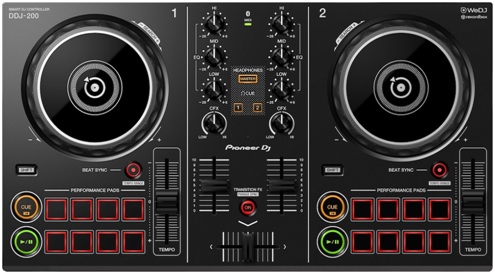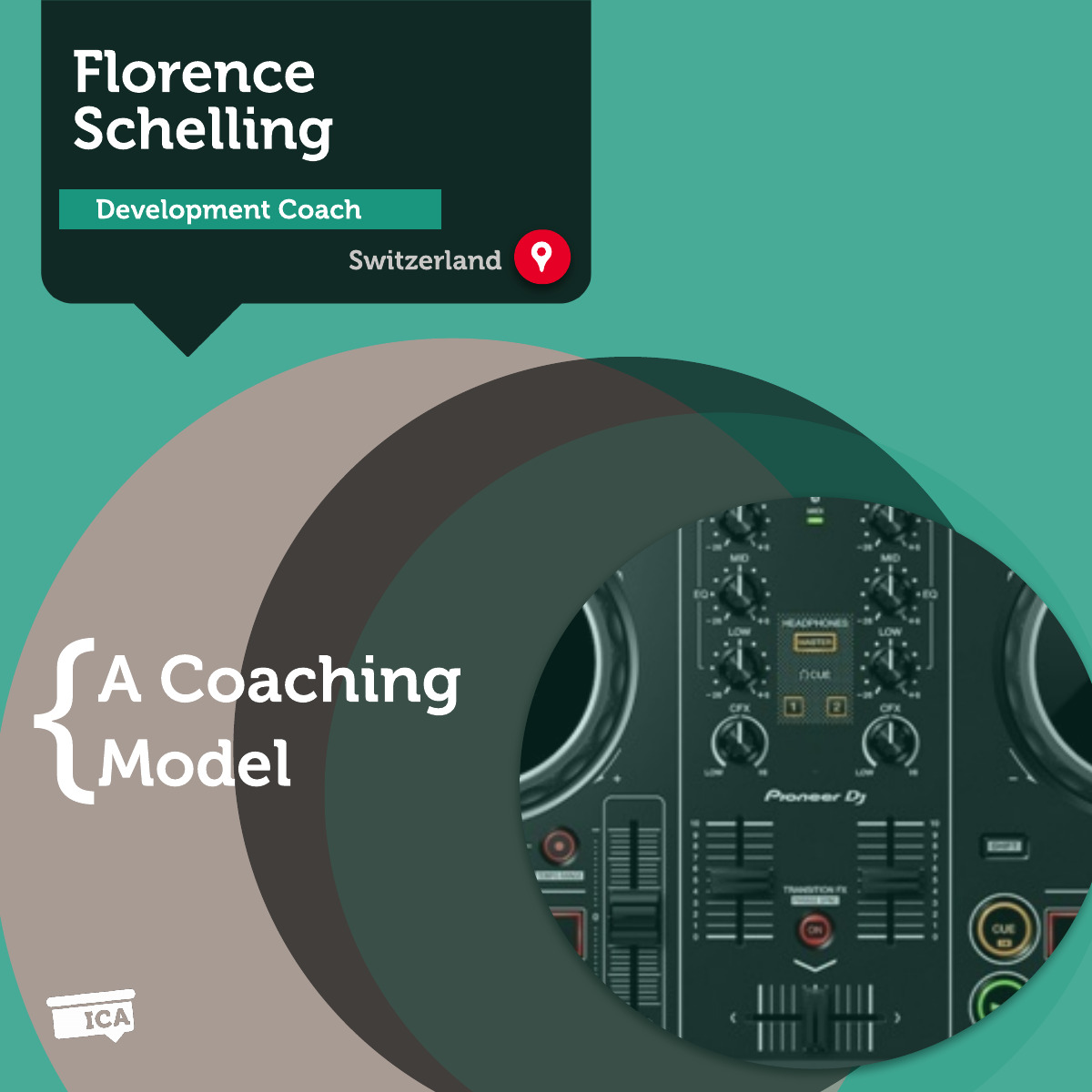A Coaching Model By Florence Schelling, High-Performance and Development Coach, SWITZERLAND
The Coaching Model “Be the DJ of Your Life”
Create the life you’ve always dreamed of.
Music: a universal language that unites, inspires, and gives hope to so many. Music is being played in many different settings we find ourselves throughout the day, without us paying much attention to it. Grocery stores, gyms, stores, malls, restaurants, coffee stores, before and after the train announcements, while waiting in line on the phone, cars, and so on. Without noticing, not a day goes by without being met by music. However, we are quick to decide whether we like or dislike the music we hear. Sometimes, we hum or sing and even have the urge to dance along to something we like. The music positively touches us. Other times, we hold our heads and want to get away from the music that we dislike as fast as possible.
The coaching model “Be the DJ of Your Life” is based on the principle of creating the music that you have always dreamed about on a DJ mixing table. Music and the DJ mixing table are being used as a metaphor for the life that we dream about and want to be living, the actions that have to be taken to get from the current state to the next desired state. Most importantly, as the DJ, you are in full control of the output that is being created.
This model can be applied in all aspects of life, private as well as professional and can be used solely as a development or high-performance model or as a progression. In the next sections, the coaching model will be explained more in-depth.
Coaching Model Be the DJ of Your Life the DJ Mixing Table

The DJ mixing table as seen above is the base of the model. It aims to be a visual representation and support of where the clients are at and where they want to go. What we decide to do on the mixing table is what will be the immediate output, sometimes the delayed output – the music that we will hear.
The left side of the table (identified as 1) is the status quo, it’s where the client currently stands and the actions that are taken – it’s the music that we are hearing right now. This is analyzed in both, development and high-performance coaching.
The right side of the table (identified as 2) is where the client wants to go and the actions that need to be taken to get there – that is the music we want to hear. The analysis of what the right side of the table should look like and actions that need to happen to get from the left to the right side is development coaching.
The middle top part (identified as 0) is the small adjustments that the client needs to make to reach the next level in their performance – will the song win the American Music Award category for the favorite song or will it just be a runner-up? This is high-performance coaching.
The middle bottom part (the faders below the Pioneer DJ logo) displays the actual transition that needs to happen to get from the left side to the right side and with how much noise (volume) the client wants to do this.
-
Status Quo
Analyzation of the status quo is what happens from the discovery call and throughout all coaching sessions. We want to understand where the client is now and what the motivation is to start the coaching. Further, the analysis of what it is that motivates them, what are the goals, but what is holding them back (Play/Pause pad), and what cues (cue pad) trigger reactions. Moreover, identifying the performance pads such as:
- What are the clients’ values and beliefs?
- What are their perspectives?
- Are they delaying vs taking action?
- Just trying vs really committing to what they want?
- Do they blame rather than take responsibility?
- And so on.
In addition to the Play/Pause, the cue, and the performance pads, the beat sync, the tempo, and the shift has to be identified. Is the client living in sync with how they want to be living? Are there multiple issues that need to be addressed and shifted in between or is there a clear issue? How much time do the clients give themselves for the coaching and develop themselves or reach high-performance? Lastly, the platter digs into patterns that occur, are the issues reoccurring? How it has been tackled previously? What worked? What did not work? What needs to be different this time around?
The status quo is about creating a strong coaching relationship and a complete understanding of the clients’ issues at hand. It’s the music that is currently playing. Once this has been established, the next step can be addressed, through development coaching or high-performance coaching.
-
Development Coaching
During the status quo, the base of the coaching relationship was identified. Now, before the full transition, from the currently playing music to playing the music that the client has always dreamed of, occurs, development coaching takes place. The goal is to newly (where needed) develop the cues, the performance pads, the tempo, the beat sync, the shifts, and the platter.
- What is the client’s dream life?
- How will the client respond to different cues?
- What is the client committed to?
- What are the next action steps?
- How do they trust?
- What has the client learned about themselves?
- And so on.
The DJ mixing table at this point is a visual support for the client that they understand that they have full control over what their output is. It is their responsibility to identify the different pads to create the life they have always dreamed of. The mixing table is a guide of the clients’ everyday life that they want to be living, as well as a supporter when you are faced with decisions that you need to make.
It is important to notice however that no pad is ever finite as development is ongoing, no matter the situation, the age, and the issues. Therefore, the clients need to try the different pads and see if they work well for them or not. Also, what works right now, might not work anymore in a year from now.
Once the clients have tested and fully mastered to identify all the different pads, the full transition has occurred and the clients are in full control and responsibility for their life. At this point, the coaching relationship ends, unless the clients wish to continue to ensure that they stay on track or to dig even deeper into high-performance coaching.
-
High-Performance Coaching
In high-performance coaching, the dream music is already playing, but the clients want to win the American Music Award category for favorite songs year after year. It is based on the fact that the clients are already at a very good point and happy with their lives and are looking for minor tweaks to get just that little bit extra out of themselves. The visual representation of this is in the middle top part of the DJ mixing table.
It is key to identify the areas where minor tweaks can be made and dig deep into these topics. Adjustments at this point will be minor but could potentially have big changes in the outcome. Just like in development coaching, the clients have to try the tweaks until fully transitioning.
The coaching relationship in high-performance coaching can be a very short one, a tweak here and there and done. Or a long-term relationship where the coach acts as a third-party supporter.
The DJ Mixing Table Acts as a Guide of the Life the Clients Want
In conclusion, the coaching model “Be the DJ of Your Life” is based on the principle of creating the music that you have always dreamed about on a DJ mixing table, where is a metaphor for the life we want to be living. The DJ mixing table is a visual representation of the status quo, the development, and the high performance that the clients can get to. The clients are responsible for the output they create, and they are in full control. In the end, the DJ mixing table acts as a guide of the life the clients want to be living and supports them in everyday decisions that they have to make to be able to live the dream life.
Learn How to Create Your Own Coaching Model
Your Coaching Model reflects your values,
philosophies and beliefs and must communicate who you will coach
and the problems you will solve. Read more about creating your coaching model
References
Cover Picture DJ
DJ Table Picture
